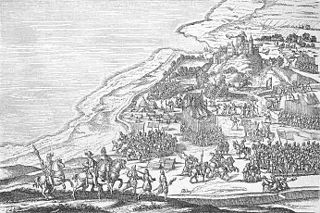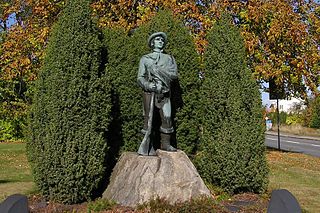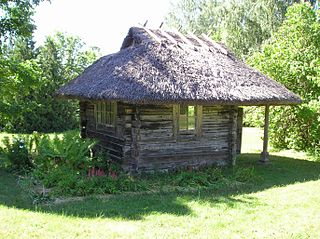 W
WThe Dano-Swedish War of 1657–58 was a conflict between Sweden and Denmark–Norway during the Second Northern War. In 1657, Charles X of Sweden and his Swedish army were bogged down in Poland. Frederick III of Denmark saw an opportunity to recover the territories lost in 1645 and attacked Sweden. The outbreak of war with Denmark provided Charles with an excuse to withdraw from the Polish campaign and move against Denmark.
 W
WThe Dano-Swedish War of 1658–1660 was a war between Denmark–Norway and Sweden. It was a continuation of an earlier conflict between the two belligerents which had ended just months earlier, after Sweden and Denmark brokered a peace agreement in Roskilde in 1658. In the aftermath of that conflict, the Swedish king Charles X Gustav desired to add the province of Royal Prussia in Poland to the Swedish realm, but his position in the region was not strong enough with the opposition of Brandenburg and Austria. However, the Danes stalled and prolonged the fulfillment of some provisions of the earlier peace; the Swedish king decided to use this as a pretext to attack with an ambitious goal: to vanquish Denmark as a sovereign state and raze the capital of Copenhagen. A quick and decisive defeat of Denmark was however only seen as a means to a greater end. The long-term goal was to wage war in Europe without fearing Danish interference.
 W
WThe term Deluge denotes a series of mid-17th-century campaigns in the Polish–Lithuanian Commonwealth. In a wider sense it applies to the period between the Khmelnytsky Uprising of 1648 and the Truce of Andrusovo in 1667, thus comprising the Polish theatres of the Russo-Polish and Second Northern Wars. In a stricter sense, the term refers to the Swedish invasion and occupation of the Commonwealth as a theatre of the Second Northern War (1655–1660) only; in Poland and Lithuania this period is called the Swedish Deluge, or less commonly the Russo–Swedish Deluge due to the Russo-Polish War. The term deluge was popularized by Henryk Sienkiewicz in his novel The Deluge (1886).
 W
WThe invasion of Rügen of 22 to 24 September 1678 was a military operation in the Swedish-Brandenburg War, or Scanian War, that ended with the annexation of the Swedish-ruled island of Rügen by the Allies: Brandenburg-Prussia and Denmark.
 W
WThe Livonian War (1558–1583) was fought for control of Old Livonia, when the Tsardom of Russia faced a varying coalition of Denmark–Norway, the Kingdom of Sweden, and the Union of the Grand Duchy of Lithuania and the Kingdom of Poland.
 W
WThe Northern Seven Years' War was fought between the Kingdom of Sweden and a coalition of Denmark–Norway, Lübeck, and Poland-Lithuania between 1563 and 1570. The war was motivated by the dissatisfaction of King Frederick II of Denmark with the dissolution of the Kalmar Union, and the will of King Eric XIV of Sweden to break Denmark's dominating position. The fighting continued until both armies had been exhausted, and many men died. The resulting Treaty of Stettin was a stalemate, with neither party gaining any new territory.
 W
WThe Scanian War was a part of the Northern Wars involving the union of Denmark–Norway, Brandenburg and Sweden. It was fought from 1675 to 1679 mainly on Scanian soil, in the former Danish and Norway provinces along the border with Sweden, and in Northern Germany. While the latter battles are regarded as a theater of the Scanian war in English, Danish, Norwegian and Swedish historiography, they are seen as a separate war in German historiography, called the Swedish-Brandenburgian War.
 W
WThe Second Northern War was fought between Sweden and its adversaries the Polish–Lithuanian Commonwealth (1655–60), the Moscow Tsardom (1656–58), Brandenburg-Prussia (1657–60), the Habsburg Monarchy (1657–60) and Denmark–Norway. The Dutch Republic often intervened against Sweden in an informal trade war but was not a recognized part of the Polish–Danish alliance.
 W
WA snapphane was a member of a 17th-century pro-Danish guerrilla organization that fought against the Swedes in the Second Northern and Scanian Wars, primarily in the former eastern Danish provinces which in the course of these wars became southern Sweden. Many pro-Danish guerrilla fighters referred to themselves as friskydter, i.e. volunteer militiamen. During the Scanian War, many Scanians who lived in the western part of Scania could quite easily join the regular Danish army, after the 1676 Danish re-conquest of the province. But in the North, this was more difficult. Instead, this partisan movement was the most common way to support the Danish. The movement did also return during the 1711 Danish attempt to regain Scania.
 W
WThe Treaty of Cardis was a peace settlement made in 1661 between Tsardom of Russia and the Swedish Empire. This particular agreement ended the Russo–Swedish War (1656–1658). It took place in Cardis Manor in Estonia. Based on the terms of the treaty, Russia surrendered to Sweden all captured territories. Moreover, all vessels constructed at Kokenhausen for the failed Russian siege of Riga were destroyed. Overall, the Peace of Cardis maintained the territorial accords of the Treaty of Stolbovo.
 W
WThe Treaty or Peace of Oliva of 23 April (OS)/3 May (NS) 1660 was one of the peace treaties ending the Second Northern War (1655-1660). The Treaty of Oliva, and the Treaty of Copenhagen in the same year, and the Treaty of Cardis in the following year, marked the high point of the Swedish Empire.
 W
WThe Treaty of Roskilde was concluded on 26 February (OS) or 8 March 1658 (NS) during the Second Northern War between Frederick III of Denmark–Norway and Karl X Gustav of Sweden in the Danish city of Roskilde. After a devastating defeat, Denmark-Norway was forced to give up a third of its territory to save the rest, the ceded lands comprising Blekinge, Bornholm, Bohuslän (Båhuslen), Scania (Skåne) and Trøndelag, as well as her claims to Halland.